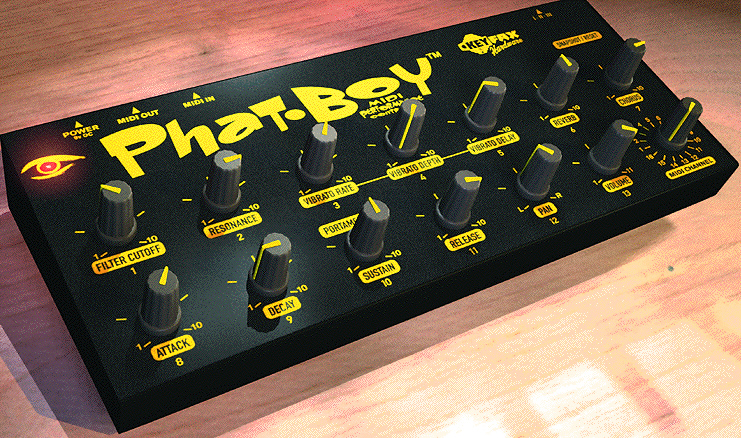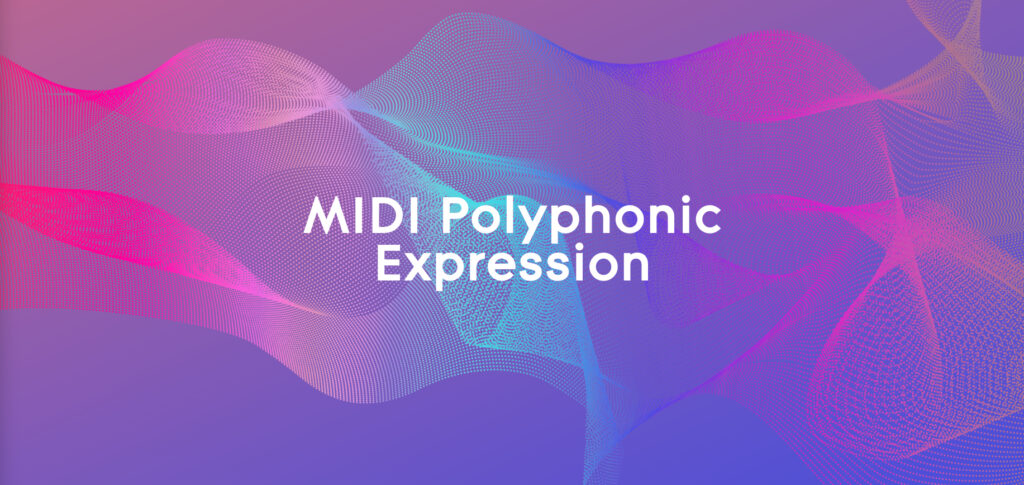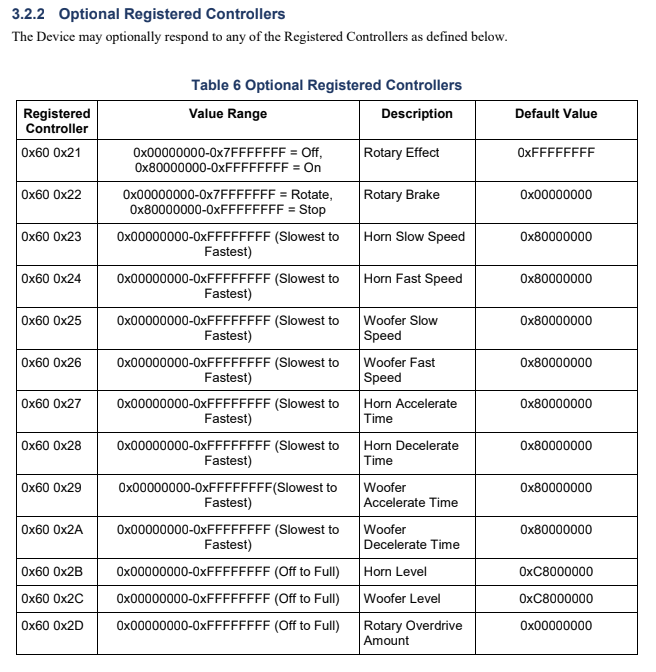6 New Profile Specifications Adopted


The MIDI Association and AMEI continue to push MIDI 2.0 forward
Profiles are one of the most powerful mechanisms in MIDI 2.0 and in the past few months the MIDI Association has adopted 6 new Profile Specifications bringing the total number of adopted Profiles to 7.
We covered some of the basics of profiles in this article.
https://midi.org/what-musicians-artists-need-to-know-about-midi-2-0
Click on the link above or image below to view that article.

The MIDI Association voted to adopt the first Profile in 2021 and then followed up with 6 Profiles specifications that were adopted around NAMM 2024:
- M2-113-UM 1-0 Default Control Change Mapping Profile
- M2-118-UM GM Function Block Profile
- M2-119-UM GM Single Channel Profile
- M2-120-UM MPE Profile
- M2-121-UM Drawbar Organ Profile
- M2-122-UM Rotary Speaker Profile
- M2-123-UM MIDI-CI Profile for Note On Selection of Orchestral Articulation
In this article, we will summarize each of the these Profiles and explain their benefits to people who use MIDI and why you should be encouraging companies to support these Profiles in their products in the future.
Default Control Change Mapping Profile
Many MIDI devices are very flexible in configuration to allow a wide variety of interaction between devices in various applications. However, when 2 devices are configured differently, there can be a mismatch that reduces interoperability.
This Default Control Change Mapping Profile defines how devices can be set to a default state, aligned with core definitions of MIDI 1.0 and MIDI 2.0. In particular, devices with this Profile enabled have the assignment of Control Change message destinations/functions set to common, default definitions.
One of the core challenges with MIDI 1.0 was that there were fewer than 128 Controller Change messages (because the MIDI 1.0 Control Change list also included Mode Changes messages, Program and Bank Change and some other very fundamental mechanisms tied to physical controllers like Foot Pedals.
On top of that the Reset All Controller message in MIDI 1.0 is interesting because it does NOT reset all controllers (only some of them) and only resets the value of the controller, not it’s destination.
In otherwords, a Reset All Controller messages will reset the value of CC74 to a default value, but not what CC74 is mapped to.
For historical reasons, many products come with default MIDI mappings setting often used parameters to the CC messages used to control General MIDI modules.
One of the first and best examples of a hardware controller that used these typical assignments was the Phat Boy by Keyfax.

If you look at the front panel of the Phat Boy and the list of controllers in the Default Controller Mapping Profile, you can see exactly how these things would work together. Channel Volume (Control Change 7), Pan (Control Change 10) are also included as well as the mapping for the physical devices listed in the MIDI 1.0 specification that include Mod Wheel, Breath Controller, Foot Controller, Damper, Sustenuto, Soft Pedal and Legato FootSwitch.
You can download the Default Control Mapping Profile HERE.
The GM Function Block Profile
In the article https://midi.org/what-musicians-artists-need-to-know-about-midi-2-0 , we included this explanation of GM and Profiles.
“Actually General MIDI was an example of what a Profile could do. GM was a defined set of responses to set of MIDI messages. But GM was done before the advent of the bi-directional communication enabled by MIDI-CI.
So in the MIDI 1.0 world, you sent out a GM On message, but you never knew if the device on the other side could actually respond to the message. There was no dialog to establish a connection and negotiate capabilities.
But bi-directional commmunication allows for much better negotiation of capabilities (MIDI -CI stands for Capabilities Inquiry after all).”
Here is a quote from the Executive Summary of the GM Function Block Profile.
The General MIDI specifications were written many years before MIDI 2.0 and the concept of MIDI Profiles enabled by MIDI-Capability Inquiry (MIDI-CI). General MIDI describes a minimum number of voices, sound locations, drum note mapping, octave registration, pitch bend range, and controller usage, thereby defining a given set of capabilities to expect in a given synthesizer which claims General MIDI compatibility. This document defines how to use General MIDI 2 as a MIDI-CI Profile.
This new definition allows all the capabilities of General MIDI 2 devices to be enabled or disabled using MIDI-CI Profile Configuration messages. The MIDI-CI Profile for General MIDI 2 defines bidirectional mechanisms for devices to discover whether General MIDI 2 functionality is available on a Receiver, enabling a more reliable and predictable result from the connection between two devices.
The GM Function Block Profile can set an entire set of 16 Channels to respond to GM2 messages, but because MIDI 2.0 has 16 Groups that can expand the functionality of MIDI beyond just 16 channels, a GM Function Block Profile could be used to set 32 or 48 channels to GM. Here is a quote from the spec.
“The MIDI-CI Profile for General MIDI 2 is a Function Block Profile (see the Common Rules for Profiles
[MA04]). The Device ID: Source or Destination field in all MIDI-CI Profile Configuration messages for this GM2 Profile shall be set to 0x7F (Function Block).
The GM2 Profile supports 16 Channels on a Device connected by a MIDI 1.0 transport.
On a MIDI 2.0 transport using UMP Format, the Profile supports any multiple of 16 up to 256 Channels. When using the UMP Format, the number of Channels which will be used when the GM2 Profile is enabled is determined by the Function Block design of the Receiver. The Sender may discover the number of Channels in the Receiver’s Function Block(s) by mechanisms defined in the Universal MIDI Packet (UMP) Format and MIDI 2.0 Protocol specification [MA06].
When the Function Block spans 2 or more Groups, the rules of Channel usage from General MIDI 2 shall apply individually to each Group. For example, if the Profile is operating on Groups 7 and 8, Channel 10 of both Groups defaults to a Rhythm Channel and all other Channels default to a Melody Channel. See the General MIDI 2 specification [MA07] for rules of implementation for each set of 16 Channels (each Group).
As defined in the Common Rules for Profiles, if no Function Blocks are declared by the Receiver, then the Profile will operate on a single UMP Group (with 16 Channels) or on 16 Channels of a MIDI 1.0 connection.
You can download the GM function Block Profile HERE.
The GM Single Channel Profile
In addition to the Function Block Profile, we have added the ability to turn on GM on Single Channel.
General MIDI System Level 1 and General MIDI 2 specifications were written many years before the concept of MIDI Profiles enabled by MIDI-CI. The original specifications require support on all 16 MIDI channels. This document defines how to use MIDI-CI Profile Configuration Messages to implement the functions of a General MIDI 2 Melody Channel on a single channel.
This Single Channel GM Profile only supports the Melody Channel of GM2 as we have some other plans in the works for Drum and Percussion Profiles.
MPE Profile
MPE has been called by Geert Bevin, one of the major proponents of both the original MPE spec and the new MPE Profile as “the bridge between MIDI 1.0 and MIDI 2.0”. MPE uses channel rotation so that each Note can have it’s own MIDI Polyphonic Expression.
There are many MPe devices in the market and MIDI Association Member Roli has done a great job of pulling together information on all the products available.
Click on the link below to see a list of products that currently support MPE.

So what are the advantages that a Profile brings to the table? Just like GM, MPE had no bi-directional communication so two products couldn’t negotiate and share information about their capabilities.
Being able to let two products exchange information can greatly expand the interoperability between the products. We tried to add as much benefit as possible without fundementally changing how MPE currently works. Here is an Overview taken directly from the new MPE Profile Specification.
MPE Profile Overview
MPE Profile Functional Overview
The MPE Profile is a MIDI-CI Profile which conforms to the definition of a Multi-Channel Profile as defined in the M2-102-U Common Rules for MIDI-CI Profiles [MA04]
“Turning On and Enabling a Profile”.
This overview summarizes the main elements of the MPE Profile specification, additional important details can be found in later sections.
MPE Profile is switched on and configured using the following messages:
- MIDI-CI Profile Configuration mechanisms to setup the devices and enable the MPE Profile
- Registered Controller/RPN [0x00, 0x00] to change the Pitch Bend Sensitivity from the default MPE
Profile value of 48 HCUs, if desired or needed.
MPE offers per-note expressive control using the following messages:
- Note On/Off
- Pitch Bend
- Channel Pressure or alternatively, bipolar Registered Controller/RPN [0x20, 0x20]
- Third Dimension of Control using Control Change #74 or, alternatively, bipolar Registered
Controller/RPN [0x20, 0x21]
MPE uses the following mechanisms to coordinate per-note control:
- The range of Channels over which notes are sent and received can be set by enabling this Profile. The
MIDI Channel space can be divided into multiple Zones by enabling multiple MPE Profiles with non-
overlapping Channels.
- Each MPE Profile has a number of Member Channels for notes plus a dedicated extra Channel, called
the Manager Channel, which conveys information common to all Active Notes in that Zone. The
Manager Channel is always the lowest Channel in the Profile and is not used for notes. - Wherever possible, every note is assigned its own Channel for the lifetime of that note. This allows
MPE messages to be addressed uniquely to that Active Note.
2.2 Differences Between MPE (v1.1) and this MIDI-CI Profile for MPE
There are a number of differences between MPE 1.1 and MPE Profile. Specifically:
- The Profile is receiver centric. The receiver will report back the range of Channels that it can support, and the Sender will adapt.
- The MPE 1.1 configuration parameter formerly set by RPN 6 (MCM), is now handled by enabling an
MPE Profile using MIDI CI. See M2-102-U Common Rules for MIDI-CI Profiles [MA04]. - Multiple Zones are realized by enabling multiple MPE Profiles with non-overlapping Channels.
- The Manager Channel is always the lowest Channel in the Profile.
- Notes sent on the Manager Channel are not defined by this Profile.
- Because the Manager Channel is always the lowest Channel, the MPE 1.1 Upper Zone is not possible
with an MPE Profile. - Profile Details Inquiry mechanism is used to determine the number of MIDI Channels which will be
used by MPE and to discover the Receiver’s properties which are addressed by the MPE controls. - There is no need to send Pitch Bend Sensitivity to every individual Member Channel, it is sent to the
Manager Channel only.
So here are a couple of points about the new MPE Profile.
- The MPE Profile can be extended over more than 16 Channels
- The MPE Profile can have multiple “Zones” because you can enable multiple Profiles as long as there are no overlapping channels. MPE is no longer limited to just 16 channels and 2 Zones.
- Manager Channels and Member Channels clarify how Messages are used
- The Profiles Detail Inquiry Message can discover optional features increasing interoperability between devices.
- The following are defined as optional features:
- MPE devices are not required to use all three core MPE Expression Controllers.
- MPE devices may optionally and mutually exclusively use high resolution versions of Channel Pressure or Third Dimension of Control Section 4.5
- MPE devices may optionally respond to Channel Response Type notification (Section 3.6.3)
- The following are defined as optional features:
You can download the MPE Profile Specification HERE.
Drawbar Organ Profile
Several years ago, we showed this demo of several prototypes of the Drawbar Organ Profile and some people may wonder what ahs taken so long to pass the Drawbar Organ Specification. Actually several very key mechanisms had to be developed before developers would ready to implement Profiles.
First, we had to come up with and prototype the Profile Details Inquiry message. This mechanism allows two products to share what optional features are supported without having to make the user configure anything. Also we need to get the operating systems to implement new MIDI APIs to pass this messages.
Below is an image taken from the Drawbar Organ Single Channel Profile. You can see the level of detail that can included in a Profiel Details Inquiry. Once again, it is important to point out that these mechanisms are two MIDI products talking to each other and auto-configuring themselves.

You can download the Drawbar Organ Profile HERE.
Rotary Speaker Profile
Rotary Speaker Profile Specification defines a common set of basic features and MIDI messages to control a rotary speaker. The typical model is a rotating speaker cabinet with a horn and woofer that rotate at different speeds. The Device that implements the specification might be a rotating speaker or an effects unit that emulates the sound of a rotating speaker. The goal of the specification is to encourage implementation of a chosen set of MIDI messages for control for the parameters that are most common to all such Devices.
Once again, once we had the right mechanisms in place, the Rotary Speaker is a very simple Profile.

You can download the Rotary Speaker Profile HERE.
Profile for Note On Selection of Orchestral Articulation
We are working on many Profiles, but we believe that the Note On Articulation could have significant impact on the way movies and games are scored in the future. Here are two Youtube videos.
The first is an overview of the Orchestral Articulation Profile and the second is the presentation from NAMM 2024 at The MIDI Association booth.
Executive Summary
There are many orchestral sample libraries in the market, and they are essential for film scoring, game audio, studio, and live MIDI applications. These orchestral libraries have many kinds of articulations.
For example, a string library might have a different set of samples for every articulation including marcato, staccato, pizzicato, etc.
However, there is no industry standard method-the method for selecting these different articulations has been different for each developer. Many developers use notes at the lower end of the MIDI note range for “key switching”, but the actual keys used are different between different developers. Some developers use CC messages to switch between articulations, but again there is no industry wide consistency. Some plugin formats now have the ability for per note selection of articulations, but again the method for inputting that data is different for different applications.
It is the goal of the MIDI-CI Profile for Note On Selection of Orchestral Articulation to provide a consistent way to encode articulation information directly in the MIDI 2.0 Note On message, using the Attribute Type and Attribute Data fields.
In arriving at this Profile, a study was made of orchestral instrument families, choir, big band instruments, guitar, keyboard instruments, and various non-western instruments to evaluate the degree to which they share common performance attributes and sound production techniques. Notation symbols and performance indications were also considered to determine, for example, how successfully a violin note marked with a trill might result in a musically meaningful or analogous articulation when the part is copied to an instrument as far afield as timpani— all without the composer having to re-articulate the timpani part, at least initially.
The Profile provides a comprehensive yet concise system of articulation mapping that includes a wide palette of articulation types and supports articulation equivalence across eight instrument categories.
The Profile was designed to offer articulation equivalence — a system of articulation mapping that allows a passage articulated for one instrument to be copied to another track and played back with an equivalent or analogous articulation, regardless of the target instrument type.
When implemented by sample library developers, the Profile will greatly aid composers in highly significant ways.
First, it will simplify the process of substituting or layering sounds from the same or different sample libraries;
Second, it will allow composers to quickly audition and orchestrate unison passages by copying an articulated part to other tracks and hear them to play back with equivalent or analogous articulations.
Here is a dopwnloadable PDF of the Orchestral Articulation Profile Overview.
We are working on several important Profiles that we hope to finish in the future near future.
The Orchestral Profile will be available for download soon.
The Camera Control Profile
Video has become the premier driver of many aspects of creative production and is now often an integral part of the music production process. Video Cameras are ubiquitous and have well-defined feature sets.
They can be roughly categorized in two groups- simple cameras with basic on/off, zoom, and focus and Pan, Tilt, Zoom cameras with either mechanical motors for moving the camera lens to focus on different objects or digital mechanisms for the same type of PTZ control.
The feature sets for these cameras are well defined, but there is no standardized control protocol. In fact, instead there are many different manufacturer specific protocols that all do very similar things. The Camera Control Working Group analyzed the various manufacturer specific protocols, determined what features had commonality and then defined the MIDI messages to control those features.
MIDI allows people to use off the shelf MIDI controllers to also control their cameras making it easier to integrate and use these products.
Adoption of the Profile might happen in one of two ways.
- Software could be developed that translated MIDI messages into the various manufacturer specific protocols which would allow Profile support for cameras already in the market.
- In the future, new cameras could be shipped with MIDI support for the Profile built-in.
The Piano Profile
Just last week, we had a joint meeting of the MIDI Association and AMEI working groups on the Piano Profile. AMEI companies that are participating are Yamaha, Roland, Korg and Kawai and The MIDI Association companies include Synthogy, Steinway, Piano Disc, Kurzweil.
The two videos that follow detail the work we have been doing on the Piano Profile and also a demo of the Profile featuring Scott Tibbs.
We’ve Been Busy
As Luther said when he gave the parking garage attendant a three year old parking garage ticket “I’ve been busy”. Yes, we have been very busy, but are starting to see the results of our work.
Our MIDI Association volunteers are continuing to work on new Profiles specifications including a DAW control profile and multiple effects profiles.
We just started a DAW working group which has the support of Apple (Audio Units), AVID( AAX), Bitwig (CLAP) and Steinberg (VST) so we have all the plug in format companies, multiple DAW and notation companies, and plug in developers all working together to ensure that MIDI 2.0 is handled correctly now that the operating systems have completed much of their work. We are planning a face to face meeting in Berlin before SuperBooth.
The Windows Open Source Driver and API is available to developers and Apple, Google and Linux continue to improve their support for MIDI 2.0.
So if you are developer, we hope you will join us by becoming a MIDI Association member or posting on the new public forum that has an area dedicated to developers.
If you are someone who uses MIDI, there are more and more MIDI 2.0 products in the market and we are confident that 2024 will prove to be a significant year in MIDI 2.0’s history.